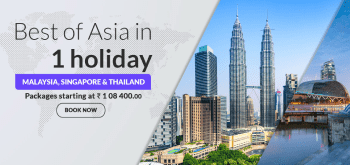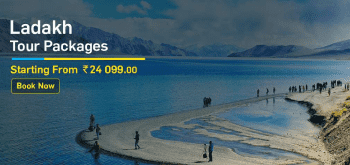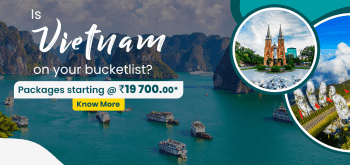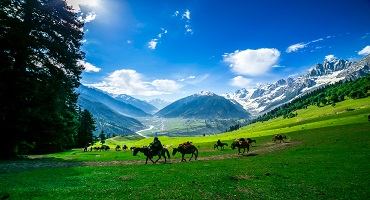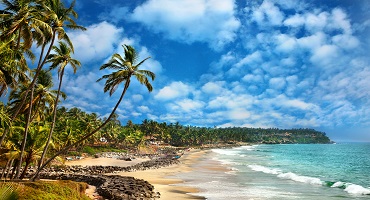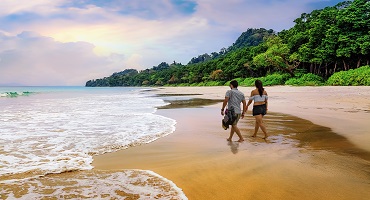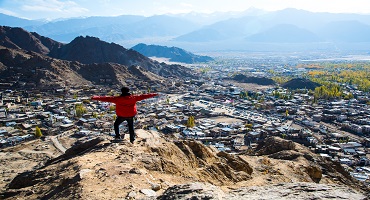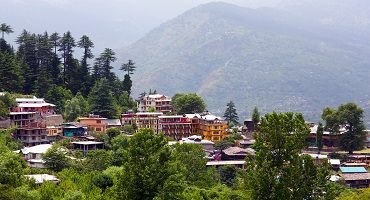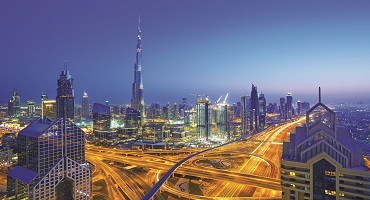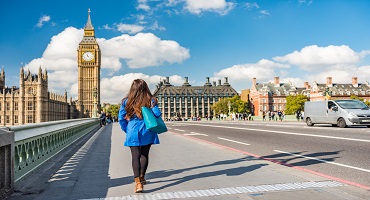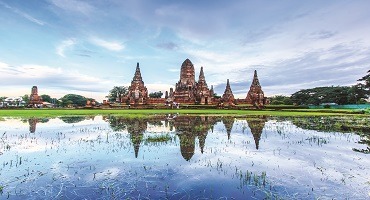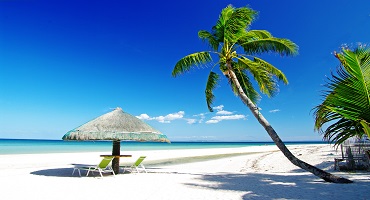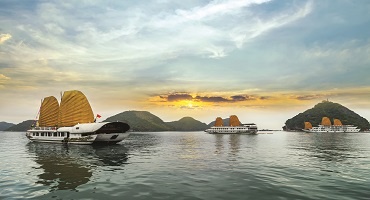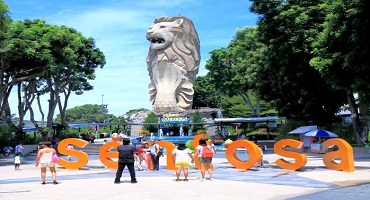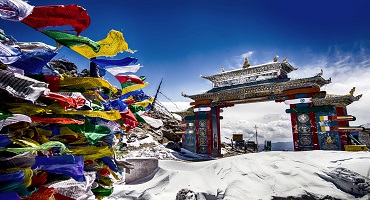The surreal and spectacular land of fire and ice
Where better to let out your inner explorer than the well known as the land of fire and ice, waves and volcanos, hot springs and hiking trails, sparsely populated towns and plenty of wildlife spotting. Welcome to Iceland, the surreally beautiful Nordic island-nation high up the waters of the North Atlantic.
The country becomes a playground for the intrepid, a retreat for the romantic and a dive into nature for the conscious. The stark yet beautiful landscapes feature everything from active volcanos, geysers and hot springs to coasts, waterfalls and glacial lakes. Activities like whale watching, birding, hiking, biking, swimming, kayaking, rafting, skiing and fishing are hugely popular. On the other hand, lively cities and rustic towns offer cultural escapades with sightseeing, the arts, architecture, dining, parties and festivals. Iceland is truly like a world in itself. Where you can reconnect with yourself and find new inspiration in the unique experiences and immersive other-worldly natural surrounds it possesses.
For this unforgettable adventure, check out Thomas Cook’s specially curated Iceland packages and book yourself the journey of a lifetime.
| Iceland Tourism : A Quick Overview |
| Continent |
Europe |
| Official Language |
Icelandic |
| Dial Code |
354 |
| Population |
360,390 (As of 2019) |
| Currency |
Icelandic Króna |
| Time Zone |
GMT |
| Area |
103,000 km² |
Highlights of Iceland:
Cities Of Iceland
Reykjavik — Iceland’s capital city that’s also its biggest, most populated and culturally vibrant city. The city centre is buzzing with activity each of the sprawling suburbs possess a charm of their own. Expect a packed itinerary, with thermal pools, museums, parks, theatres, heritage buildings, festivals, cafés, whale watching and so much more, to experience in this wonderful city that’s set in truly postcard-worthy natural surroundings.
Akureyri — Set in the north of the country, it is a scenic settlement with a beautiful city centre that’s home to churches, art galleries, shops and museums. The spectacular arctic Botanical Garden is also worth visiting, as are remote regional attractions like the crater of Víti and Goðafoss waterfall that are best accessed from the town.
Isafjordur — The biggest town of the Westfjords peninsula, set in the serene and pristine north-west pocket of the country where you can take on amazing activities like hiking, biking, kayaking, horse riding, bird watching and skiing, amidst breathtaking scenery. Some of Iceland’s top music festivals are also held here, such as Aldrei for ég suður and Við Djúpið.
Seydisfjordur — A charming little town in the East fjords that attracts adventurers and dreamers in equal measure. It is enveloped by captivating landscapes which are covered with soaring cliffs, cascading waterfalls, and thrashing waves. The picturesque town is known for playing warm hosts to the tourists.
Selfoss — Just an hour away from Reykjavík and part of the famous Golden Circle tour of Iceland is the beautiful town of Selfoss. Visitors can’t get enough of the stunning Olfusa River hiking trails, the Olfusa Waterfall and the cultural experience of their annual summer festival.
Husavík — Make your way to quaint town in the north-east that is considered the site of Iceland’s very first settlement. Today, Húsavík is a much-visit destination for anyone interested in whale watching. One can sight Humpback, Minke and Blue Whales. There’s also a Whale Museum in town which is also the starting point of some of the country’s most exquisite hiking trails.
Attractions Of Iceland:
Hallgrimskirkja — The landmark structure in all of Iceland is the Hallgrímskirkja Church in Reykjavík, a modernist architectural marvel that’s inspired by the natural wonder known as the Black Falls. Standing 73 metre tall, the tower makes for a striking viewpoint of the entire city.
The Golden Circle — Iceland’s most popular tourist circuit covers three major attractions, including the hot springs of Geysir, Gulfoss Waterfall and Þingvellir National Park. Join an organised tour or drive yourself, as these are spectacular sights not to be missed!
Blue Lagoon — The country’s most popular geothermal pool, located close to the capital city, can be found on most visitor itineraries. Book your tickets in advance to beat the crowds and take a thrilling yet rejuvenating dip in these mineral-rich waters.
The Diamond Circle — This tourist circuit in northern Iceland covers three main attractions of the region –Ásbyrgi Canyon, Dettifoss Waterfall and Lake Myvatn, in just one day. Choose either operated tours or rentyour own vehicle for this activity.
Northern Lights — During the colder months, Iceland bears witness to the alluring natural phenomena known as the Northern Lights. This colourful display of dancing lights in the sky is on every travellers’ bucket list and here there are countless opportunities to have this once-in-a-lifetime experience.
Vatnajokull National Park — The region encapsulating Iceland’s largest glacier is also its biggest national park that’s home to natural attractions aplenty. Go hiking or diving around to see them all, for unparalleled views — including the amazing Skaftafell Ice Cave and Askja Caldera.
Shopping In Iceland:
With Iceland being such a unique destination, you’re most likely going to want to pick up a souvenir or two to remember your trip. While there are plenty of big malls with the usual products found in the capital and other big cities, the items really worth purchasing are local specialties such as the “lopapeysa” or Icelandic hand-knit woollen sweater, handicrafts made of natural materials like wood, artworks and music. Laugavegur and Kolaportið are two must-visit shopping destinations in Reykjavík.
Cuisine Of Iceland:
The traditional cuisine of Iceland consists mainly of fish and meat dishes like harðfiskur or dried fish, hangikjöt or smoked lamb. Only true culinary adventurists would opt for the authentic dishes as many of them involve unusual ingredients and animal off-cuts. But ever since tourism picked up in the country, plenty of global cuisines have made it to Reykjavík and other cities. Nowadays even vegan restaurants can be found there easily. Pylsa is the local incarnation of the hot-dog — the most popular quick bite and street food of Iceland and something you might find yourself eating more than once.
Interesting facts about Iceland:
- Iceland is the 18th biggest island in the world.
- The total population of Iceland is only around 320,000 out of which 60% reside in the capital Reykjavík.
- It is said that 80% of the country is uninhabited
- The locals are descendants of the Vikings and Celts.
- The country is home to over 100 volcanoes and 269 glaciers, which is why it’s also called “The land of fire and ice”
- The natural phenomenon called Aurora Borealis or the Northern Lights can be seen in Iceland’s skies during autumn and winter.
- Given its location and climatic conditions, there are no mosquitoes in Iceland.
- The only animal that is native to the island that still lives, is the Arctic Fox.
- With plenty of natural springs and hot geysers, all taps in Iceland are safe to drink water from and no shower heaters are necessary.
Location Of Iceland:
Iceland sits right where the North Atlantic and Arctic Oceans collide, with most of the main island just south of the Arctic circle. Greenland is the closest other landmass to Iceland, however it is considered more a part of Europe than North America. It is the world’s 18th largest island and includes 30 smaller islets offshore.
Best time to visit in Iceland:
Even though Iceland isn’t as cold as other places along the same latitude, winters are still too cold for people who aren’t used to it, which is why it’s the least popular with travellers. Summers, on the other hand, are the best time to visit the country. Between March and September, the temperatures are just right to be outdoors, which is essential in a country as naturally beautiful as Iceland. It is also when most festivals, events and activities take place.
How to get to Iceland:
By Air
From India, the only way to reach Iceland is taking a flight via Europe to Keflavík International Airport, about 40 km away from the capital city, Reykjavík. These flights operate out of major cities like Mumbai, New Delhi, Chennai, Hyderabad and Bengaluru to name a few. They are provided by popular airlines such as Lufthansa, Etihad, Emirates, British Airways, Air India, Turkish Airlines and Air France. The national carrier for Iceland is Icelandair which has non-stop flights from top European cities.
By Sea
The more unusual way for tourists to get to Iceland is on the Smyril Line ferry that sails from Hirtshals in Denmark to Seyðisfjörður in Iceland via the Faroe Islands. The journey takes two days and the ferries even provide the option of bringing a car to Iceland.
History of Iceland:
Iceland was first inhabited back in the 9th century AD, by Viking, Norseman and Celtic settlers. Each community has left an identifiable imprint on the cultural landscape of the country, from the ancient Viking language spoken to the Celtic influence in art and literature. Over the years, the land came under the power of many rulers, from independent kings to the Danish empire. It was only in the 19th century that a nationalist movement began that eventually led to complete Icelandic sovereignty from Denmark, in the year 1944.. Even with a population of just 320,000, Iceland has produced some of the world’s finest musicians, filmmakers, visual artists, photographers and writers.

